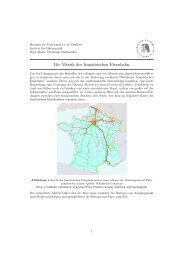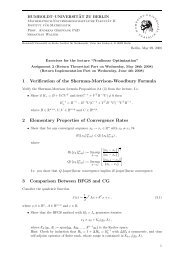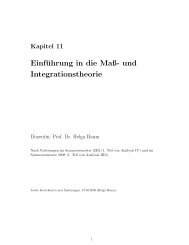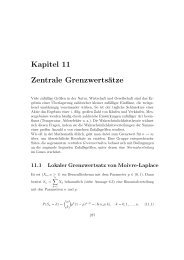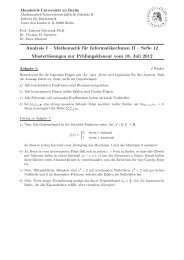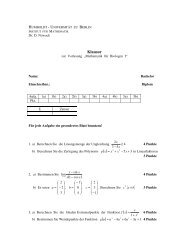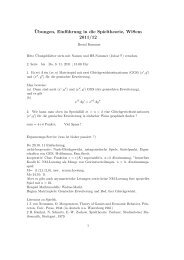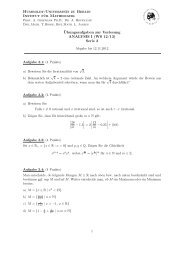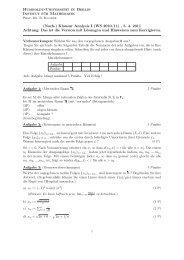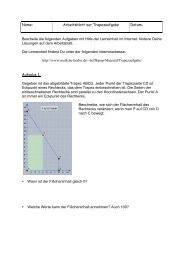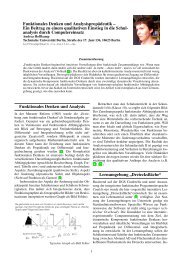AD Tutorial at the TU Berlin
AD Tutorial at the TU Berlin
AD Tutorial at the TU Berlin
You also want an ePaper? Increase the reach of your titles
YUMPU automatically turns print PDFs into web optimized ePapers that Google loves.
Test Example for <strong>the</strong> Symmetric Eigenvalue Decomposition 4<br />
Orthonormal M<strong>at</strong>rix:<br />
0<br />
1<br />
cos(x(t)) 1 sin(x(t)) −1<br />
1<br />
Q(t) = √ B− sin(x(t)) −1 cos(x(t)) −1<br />
C<br />
3<br />
@ 1 − sin(x(t)) 1 cos(x(t)) A<br />
−1 cos(x(t)) 1 sin(x(t))<br />
Λ(t) = diag(x 2 − x + 1 2 , 4x2 − 3x, δ(− 1 2 x3 + 2x 2 − 3 2 x + 1) + (x3 + x 2 − 1), 3x − 1) ,<br />
where x ≡ x(t) := 1 + t.<br />
constant δ = 0 means repe<strong>at</strong>ed eigenvalues, δ > 0 distinct but close<br />
In Taylor arithmetic one obtains<br />
Λ 0 = diag(1/2, 1, 1 + δ, 2)<br />
Λ 1 = diag(1, 5, 5 + δ, 3)<br />
Λ 2 = diag(2, 8, 8 + δ, 0)<br />
Λ 3 = diag(0, 0, 6 − 3δ, 0)<br />
Λ d = diag(0, 0, 0, 0), ∀d ≥ 4 .<br />
Define A(t) = Q(t)Λ(t)Q(t) and try to reconstruct Λ(t) and Q(t).<br />
4 Example adapted from Andrew and Tan, Comput<strong>at</strong>ion of Deriv<strong>at</strong>ives of Repe<strong>at</strong>ed<br />
Eigenvalues and <strong>the</strong> Corresponding Eigenvectors of Symmetric M<strong>at</strong>rix Pencils, SIAM Journal<br />
on M<strong>at</strong>rix Analysis and Applic<strong>at</strong>ions<br />
Sebastian F. Walter, HU <strong>Berlin</strong> () Not So Short <strong>Tutorial</strong> OnAlgorithmic Differenti<strong>at</strong>ion Wednesday, 04.06.2010 31 / 39



